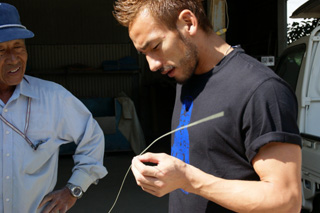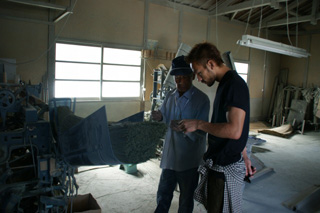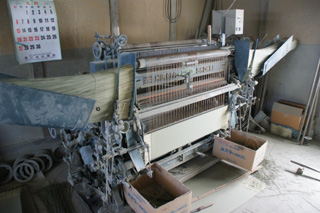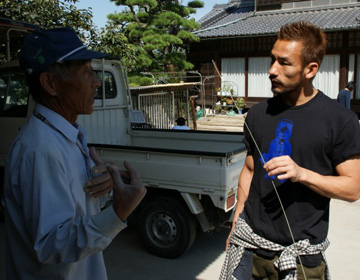 |
Keeping the Tradition of Rush CultivationKurashiki city and its surroundings is known for the production of “igusa” (rush) used to make “tatami” (Japanese traditional woven mat). However, the demand has declined due to the import of cheaper ”tatami” made in China. In and around Kurashiki city, ”igusa” is only cultivated in three places; Kurisaka, Kameyama, and Hayashimacho, and only accounts for an area of about 20,000 square meters. |
Suited for Japanese Climate”Igusa” has a sponge core called “toshin”. When the humidity is high, moisture is stored in the ”toshin”, and is emitted when the room is dry. |
 |
 |
Adapting to changing lifestylesThere is a ”kogei” of Kurashiki called “hanagoza” or “flower mat”, which is ”igusa” dyed in various colors woven by a hand loom. They are also known as “igusa rugs”. The ”igusa rug” woven with delicate patterns not only fits in well with a Japanese style room, but is also suitable for western style decor. ”Tatami” may be disappearing from Japanese homes, but incorporating ”igusa rugs” in the modern lifestyle may be a good idea. |
ACCESS
- Rush Cultivation, Processing Tadashi Kurisaka
- Kurashiki, Okayama
 Discovering Japan [Nihon] through authentic craftsmanship [Honmono]
Discovering Japan [Nihon] through authentic craftsmanship [Honmono]